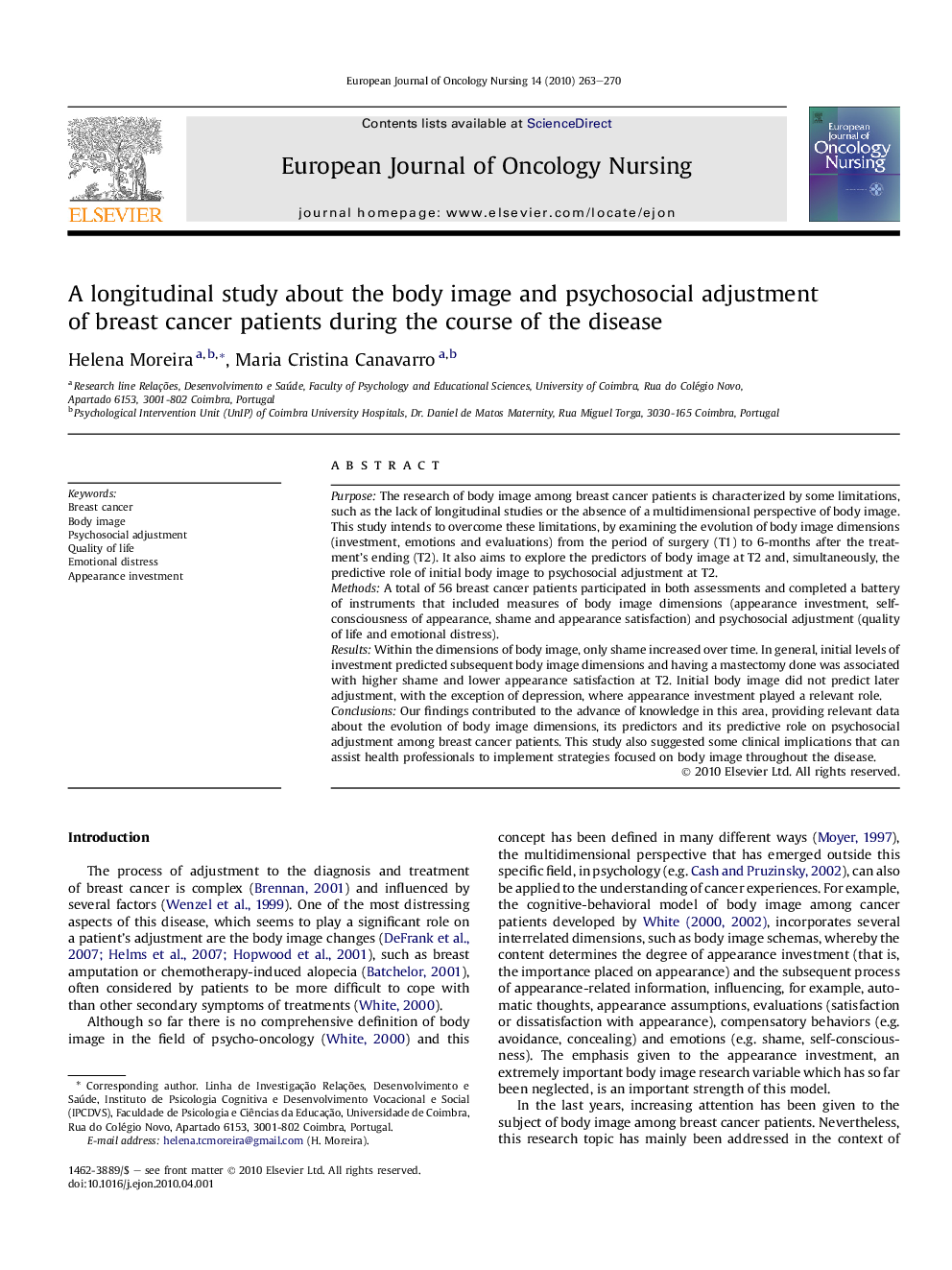| Article ID | Journal | Published Year | Pages | File Type |
|---|---|---|---|---|
| 2649919 | European Journal of Oncology Nursing | 2010 | 8 Pages |
PurposeThe research of body image among breast cancer patients is characterized by some limitations, such as the lack of longitudinal studies or the absence of a multidimensional perspective of body image. This study intends to overcome these limitations, by examining the evolution of body image dimensions (investment, emotions and evaluations) from the period of surgery (T1) to 6-months after the treatment’s ending (T2). It also aims to explore the predictors of body image at T2 and, simultaneously, the predictive role of initial body image to psychosocial adjustment at T2.MethodsA total of 56 breast cancer patients participated in both assessments and completed a battery of instruments that included measures of body image dimensions (appearance investment, self-consciousness of appearance, shame and appearance satisfaction) and psychosocial adjustment (quality of life and emotional distress).ResultsWithin the dimensions of body image, only shame increased over time. In general, initial levels of investment predicted subsequent body image dimensions and having a mastectomy done was associated with higher shame and lower appearance satisfaction at T2. Initial body image did not predict later adjustment, with the exception of depression, where appearance investment played a relevant role.ConclusionsOur findings contributed to the advance of knowledge in this area, providing relevant data about the evolution of body image dimensions, its predictors and its predictive role on psychosocial adjustment among breast cancer patients. This study also suggested some clinical implications that can assist health professionals to implement strategies focused on body image throughout the disease.
